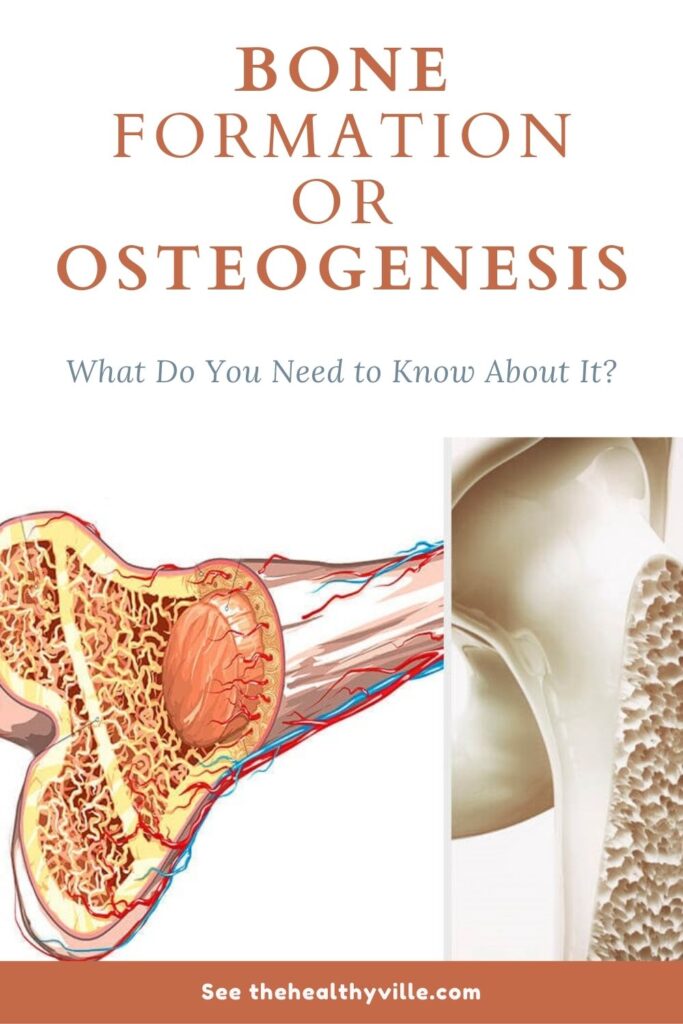The bone formation process, osteogenesis, occurs both during embryonic development, as in the repair of fractures or during growth. Know more!
Osteogenesis: the bone formation
The formation of bone tissue is a fascinating process that is part of human development and is called osteogenesis. It begins during the eighth week of embryonic development and the first bone to form is, curiously, the clavicle.
In addition to being the process of bone formation, osteogenesis is the process on which their repair depends in the event of fractures. Do you want to know more about it?
Formation and development of the skeleton
All the bones of the human skeleton are derived from three embryonic structures: the somites, the mesoderm, and the neural crest.
The osteogenesis process consists of the transformation of pre-existing tissue into bone tissue. There are two mechanisms:
Intramembranous ossification. This is the name given to the direct transformation of the original tissue into bone tissue.
Endochondral ossification. This process is somewhat more complex and takes place in two stages. First, the initial tissue is replaced by cartilage, then the cartilage ossifies.
Embryonic structures that give rise to bones
Somites are transient embryonic structures and are essential for the development of the pattern of segmented structures typical of vertebrates. In fact, from them derive the bones that are part of the axial skeleton. These are the bones of the skull and hearing, the hyoid, the ribs, the sternum and the spine.
The mesoderm is the middle layer (one of the three cell layers) from which the entire embryo develops.
Initially, there are three layers of cells: an inner, an intermediate, and an outer. Thanks to a complex process of differentiation, each and every one of these develops from them.
Finally, the transitory cell formation, typical of the first stages of development. It has a fundamental characteristic: the pluripotentiality of its cells. That is, cells can give rise to almost any type of definitive structure of the body.
Regarding the skeleton, they give rise to the craniofacial bones, cartilage and other structures.
Intramembranous ossification process
Through this process, the formation of the flat bones of the skull happen. In fact, as its name suggests, ossification occurs within a connective tissue membrane. Some of the cells in this membrane will become osteoblasts, the cells that make up the bone matrix. Others will do so in cells that are part of the small blood vessels that supply the bones.
The osteoblasts gather to form the ossification center, around which the bone will progressively form. These cells synthesize and release the necessary components to create a matrix capable of capturing calcium salts.
In this way, the initial membrane ossifies. In fact, the transformation of embryonic cells into osteoblasts occurs thanks to the activation of the transcription factor CBFA1. This, in turn, CBFA1 activation is dependent on BMP proteins.
This other process is characterized by the formation of cartilage from the embryonic tissue and its subsequent ossification. For this, five stages are necessary:
Cells express two transcription factors: Pax 1 and Scleraxis, fundamental for the activation of the genes that will convert the original cells into cartilage. The expression of transcription factors is possible thanks to the fact that some cells induce their neighbors to do so in a paracrine manner.
The cells that have have the necessary genes clump together and become chondrocytes. These multiply rapidly and form a kind of “template” for the future bone.
In a fourth step, the multiplication stops and the chondrocytes increase in size.
The chondrocytes die progressively, and osteoblasts replace them.
Osteogenesis imperfecta: crystal bone disease
Osteogenesis imperfecta is a genetic disease, excessive weakness of the bones. In fact, people who suffer from it suffer fractures almost constantly. Other associated problems are deafness, visual difficulties or constipation.
The disease is due to mutations that alter collagen I, an essential component in the bone matrix. The lack of this substance is responsible for the excessive fragility of the bones of those affected.
Osteopetrosis – too dense bones
Osteopetrosis is a rare congenital disease, characterized by a pathological increase in bone density. In fact, it is the consequence of an imbalance between the action of osteoblasts and osteoclasts.
In most cases, due to mutations, there’s an alteration of the osteoclast carbonic anhydrase, making them dysfunctional. People with this disease also suffer fractures because the bones formed are abnormal.
As we have seen, the process of bone formation – known as osteogenesis – is extremely interesting, and it is remarkable how important it is for human development and health from the womb.
Don’t forget to SHARE everything you now know about bone formation with your friends and family on your social networks!

